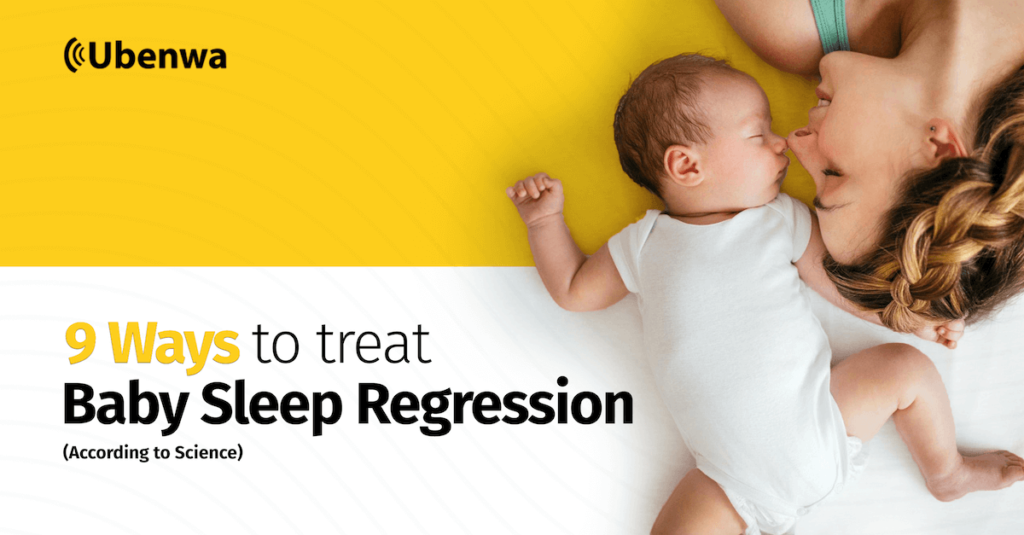Ready, Set, Snooze!
Do you find yourself singing lullabies for hours on end just to get your little one to drift off to slumberland? Is your baby undergoing a sleep regression? Sleep training may be just the solution you need!
In our previous blog article, we told you about the different stages of sleep and the main methods of sleep training, and this week we will be going over how to actually put that plan into practice.
We’ll be covering:
- Tips and tricks to help make the process as smooth as possible
- How to combine sleep training with gentle parenting techniques
Implementing a sleep training plan can feel like a giant hurdle for new parents, but with the right game plan and preparation it can be a breeze. So grab your favourite bedtime beverage and get ready to catch some Z's!
Step one: Choose your sleep training method wisely. Just like Goldilocks, you want to find the one that's just right for you and your little one. From cry-it-out to the "no-cry" method, there's a plan for every parent and baby. Just pick one and stick with it – consistency is key!
Step two: Create a bedtime routine that's as cozy as a lullaby. Bath, story, song, cuddle – whatever gets your baby in the mood for zzz's. Having a consistent routine will help your baby know it's time for slumber.
Step three: Sweet dreams are made of this. Make sure your baby's sleeping environment is just right – not too hot, not too cold, but just right! White noise, a soothing sound machine, and a dark and quiet room can do wonders for your baby's sleep.

And just like that, It's time to start the sleep training journey!
You've got your bedtime routine set, and your baby's sleep environment is cozy and conducive. Now, depending on the method you chose, you may need to let your baby cry it out for brief intervals, slowly cut back the pre-sleep attention time or comfort your baby to sleep.
While training, make sure to keep a sleep diary to monitor baby's snooze patterns and make any necessary tweaks to your plan. Stay flexible too, as plans may need to change for your little one.
Want some more tips? If you use baby-led techniques, use a pacifier as your sidekick to aid in baby's slumber, and adopt a consistent soothing technique like rocking, singing or patting.

Don't let sleep training slip-ups trip you up! Avoid common mistakes like picking up your baby too soon during cries while using the cry it out method, or having baby doze off during feedings or rocking. These can lead to sleep associations that make solo sleep a struggle.
If you hit snags during training, don't toss in the towel. Troubleshoot and make tweaks as needed. If baby is bawling for an extended time, maybe it's time to shorten check-in intervals or try a different approach.
And don't forget to fire up the Nanni AI app to help understand those baby cries!
By analyzing a baby's cry, our app can help determine if your baby is in distress, helping you to make more informed decisions about your baby's sleep training journey. For example, our app could help you realize when it's appropriate to intervene and provide comfort, ultimately leading to healthier sleep patterns for the baby and peace of mind for the parents.
In a nutshell, sleep training can feel like climbing a mountain for new parents, but with the right steps and preparation, it can be a breeze! Choose a method that works for both you and baby, set a bedtime routine, create a peaceful sleep environment, and be patient and consistent. With some patience, persistence and flexibility, you'll help baby develop healthy sleep habits and a happier, healthier life.
Snooze it to win it! Want to give your little one the best shot at sweet slumber? Consider combining sleep training with gentle parenting strategies. It's a 1-2 punch for the win! Gentle parenting is all about treating your baby with empathy, respect, and open communication. So, why not bring those same principles to sleep training? By being responsive to your baby's individual needs, you'll help them feel cozy and comfy during the sleep training process.

Gentle parenting is all about connecting with your baby through empathy, respect, and open communication. And when it comes to sleep training, you can still be a gentle parent by being attentive to your baby's individual sleep needs and creating a sleep-friendly environment.
This means a cozy room with just the right temperature, white noise or calming sounds, and darkness and peace so your baby can slumber away peacefully. Safety is key too, so make sure your baby's sleeping area is hazard-free. With this peaceful setting, your baby will be well on their way to forming those healthy sleep habits.
And don’t forget to be consistent! Consistency is key for baby's sleep, so establish a bedtime routine to let your little one know it's time for shuteye. Stick to a consistent nap schedule, and always be ready to adjust to your baby's unique needs.
By combining gentle parenting strategies with sleep training, you can provide a more balanced and effective approach to helping babies establish healthy sleep patterns. With a little patience, persistence and flexibility, you can help your baby establish healthy sleep patterns, improve their overall health and well-being, and also, establish a strong foundation of trust, communication, and respect in your relationship with your child.
Conclusion
It's no secret that babies and sleep don't always go hand-in-hand. And while some methods may work wonders for one family, they may be completely ineffective with another. However, with a little patience, some good advice and a flexible approach, you can help your baby establish healthy sleep patterns that will benefit them for years to come.
And be consistent! It may take several weeks or even months for your baby to settle into healthy sleep patterns, so it's essential to be consistent and stay the course. But don't be afraid to adjust your approach to fit your little one’s unique needs - a little flexibility goes a long way!
Every baby is different and what works for one may not work for another. So before starting any sleep training, it's important to consult with a pediatrician or a sleep expert to ensure your preferred method is safe and appropriate – especially if they have any underlying medical conditions.
Don’t forget - Ubenwa is here to help, so don't hesitate to reach out if you have any questions or need support.
Want to learn more about your baby’s cries and get access to AI-powered insights not available anywhere else?
Click here to analyze your baby’s cry today with Ubenwa’s brand new app
Scientific Articles
- Sleep and Brain Development: The Critical Role of Sleep in Fetal and Early Neonatal Brain Development by Stanley N. Graven, MD and Joy V. Browne, PhD. https://www.sciencedirect.com/science/article/abs/pii/S1527336908001323
Books:
- The No-Cry Sleep Solution by Elizabeth Pantley
- Solve Your Child's Sleep Problem by Richard Ferber
- The Baby Sleep Book by William Sears and Martha Sears
- The Happiest Baby on the Block by Harvey Karp
- The Sleep Lady's Good Night, Sleep Tight by Kim West



